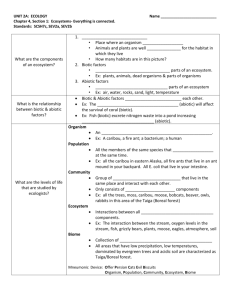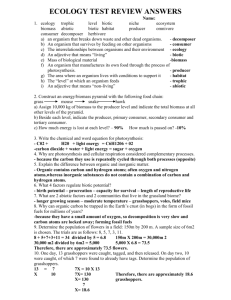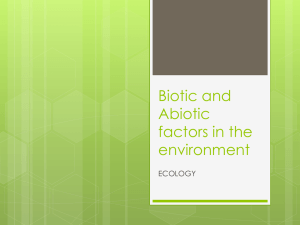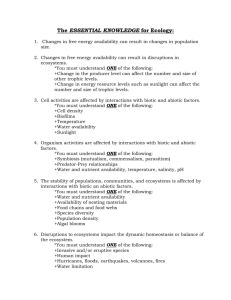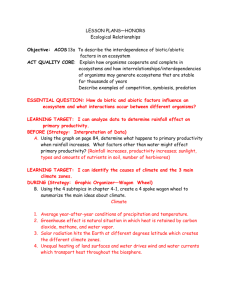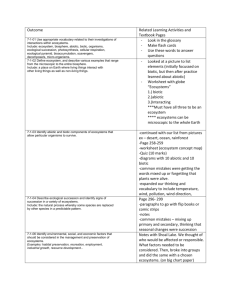Interdependence Study Guide Name: Learning Target #1
advertisement
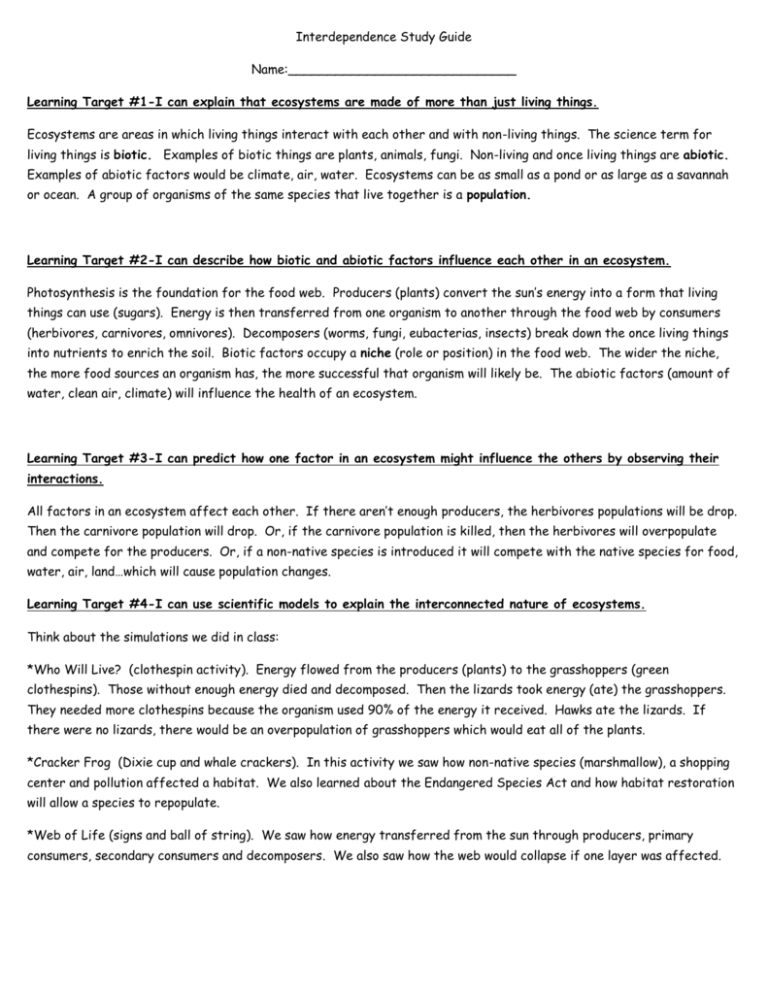
Interdependence Study Guide Name:_____________________________ Learning Target #1-I can explain that ecosystems are made of more than just living things. Ecosystems are areas in which living things interact with each other and with non-living things. The science term for living things is biotic. Examples of biotic things are plants, animals, fungi. Non-living and once living things are abiotic. Examples of abiotic factors would be climate, air, water. Ecosystems can be as small as a pond or as large as a savannah or ocean. A group of organisms of the same species that live together is a population. Learning Target #2-I can describe how biotic and abiotic factors influence each other in an ecosystem. Photosynthesis is the foundation for the food web. Producers (plants) convert the sun’s energy into a form that living things can use (sugars). Energy is then transferred from one organism to another through the food web by consumers (herbivores, carnivores, omnivores). Decomposers (worms, fungi, eubacterias, insects) break down the once living things into nutrients to enrich the soil. Biotic factors occupy a niche (role or position) in the food web. The wider the niche, the more food sources an organism has, the more successful that organism will likely be. The abiotic factors (amount of water, clean air, climate) will influence the health of an ecosystem. Learning Target #3-I can predict how one factor in an ecosystem might influence the others by observing their interactions. All factors in an ecosystem affect each other. If there aren’t enough producers, the herbivores populations will be drop. Then the carnivore population will drop. Or, if the carnivore population is killed, then the herbivores will overpopulate and compete for the producers. Or, if a non-native species is introduced it will compete with the native species for food, water, air, land…which will cause population changes. Learning Target #4-I can use scientific models to explain the interconnected nature of ecosystems. Think about the simulations we did in class: *Who Will Live? (clothespin activity). Energy flowed from the producers (plants) to the grasshoppers (green clothespins). Those without enough energy died and decomposed. Then the lizards took energy (ate) the grasshoppers. They needed more clothespins because the organism used 90% of the energy it received. Hawks ate the lizards. If there were no lizards, there would be an overpopulation of grasshoppers which would eat all of the plants. *Cracker Frog (Dixie cup and whale crackers). In this activity we saw how non-native species (marshmallow), a shopping center and pollution affected a habitat. We also learned about the Endangered Species Act and how habitat restoration will allow a species to repopulate. *Web of Life (signs and ball of string). We saw how energy transferred from the sun through producers, primary consumers, secondary consumers and decomposers. We also saw how the web would collapse if one layer was affected.



